The last passage of the year
A SMALL WEATHER WINDOW
Four days later the winds had dropped and the waves at the river mouth had settled enough to allow us to get out. At the same time there was a 45 hour window of good weather forecast for what we estimated would be a 50 hour passage across to the Netherlands. We decided to go for it: the long-range forecast looked gruesome and the thought of staying longer in Thyborøn even more so.
DELFZIJL, HERE WE COME!
We left in the darkness at 0525 to catch an outgoing tide, and set course for Delfzijl. While Lauwersoog was also an option, Frederieke’s sister had requested that we make landfall in Delfzijl so that she could personally welcome us back in the Netherlands. We were happy to oblige given that the trip to Lauwersoog was slightly longer and, as luck would have it, the wind direction was also more favourable for Delfzijl than for Lauwersoog. Leaving the harbour, the dolphins were nowhere to be seen, they must still have been sound asleep! But the winds were light, and the residual swell and waves were reasonable once we were well out of to sea.
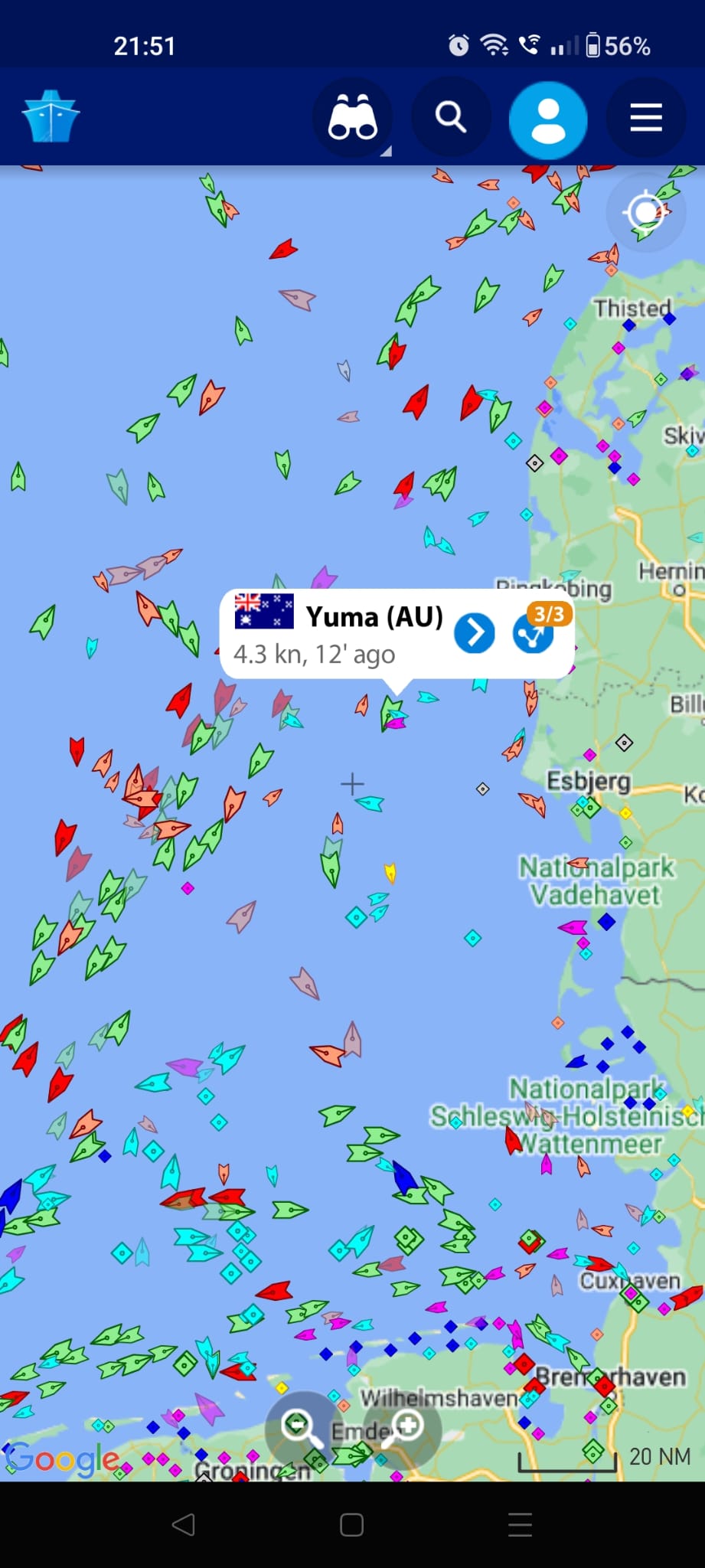
It was getting busy again, being on the North Sea.
NOT A STRAIGHT LINE…
Once again, with a very short weather window for the distance planned, shallow seas and a gale at the other side of our weather window, there was no time for tarrying. We needed to hoof it. Nevertheless, while we were keen for a straight line from Thyborøn to Delfzijl, the North Sea is like an obstacle course and we needed to plot our course around huge windfarms, oil and gas platforms, and perpendicularly across the various shipping channels. This added quite a few miles to the whole trip, but we had no choice as boats are not allowed to traverse Danish and German windfarms. Remarkably, no matter which direction we needed to go in, the wind seemed to turn with us, almost always putting us on a close reach. So we motor sailed when the wind wasn’t helpful and sailed when we could.
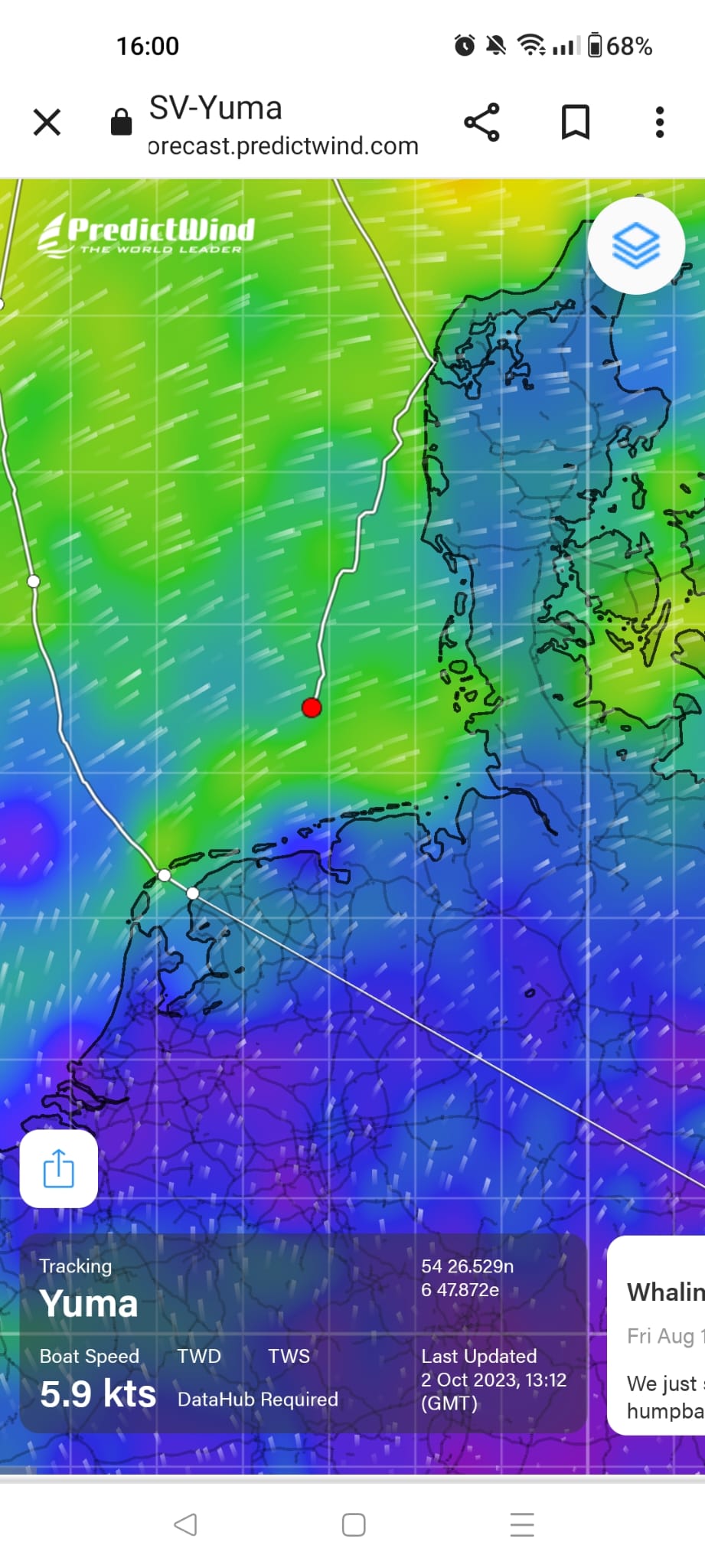
Zig-zagging across the North Sea.
UNEVENTFUL, WHICH IS GOOD
Luckily, the trip was largely uneventful as we dodged fishing boats, wind farms, oil platforms and shipping. Uneventful was good but it was also uncomfortable with Yuma behaving like a rocking-horse on the short and steep North Sea waves. This was a small price to pay for making an uneventful crossing. For me (F), the weather in this part of the North Sea, in particular the very abrupt changes in wind strength and direction, were fascinating to watch! The visibility during most of the crossing was good and by keeping a careful eye on the clouds and water surface I could predict and anticipate when these changes were going to happen. Unfortunately, one of these changes occurred when I was preparing to cross well in front of a bulk carrier. The wind change meant that we were now well and truly on a collision course. A grumpy radio call from the bulk carrier and one granny tack on my part later, I was able to pass astern the large vessel. In the process I had lost about half an hour. With the forecasted gale still moving up along the Dutch coast, I paid extra attention to trimming the sails as perfectly as possible in an effort to make up the lost time!
SO CLOSE, BUT STILL SO FAR!
Around 1900 the next day we approached the Waddeneilanden in the dark and could see the lights of the Dutch and German islands and coasts. But…the last mile is always the longest! First, just north of Rottum and Borkum, we had to do a mad dash across the main shipping channel as large freighters bore down on us from three directions at high speed. Then we had to zigzag through a maze of shallows with some of the marker bouys missing in action. As we entered the mouth of the Ems river we scooted along at 7-8kt with an incoming tide but, unfortunately, this wasn’t to last. The tide turned just as the first winds of the incoming gale reached us, and in no time we had 20+kt on the bow and 4kt of outgoing current. Our speed quickly dropped to 2-3kn.

Slowing right down on the Ems river.
Sigh, Delfzijl so close but still so far away! But, with the gale building up outside there was not much we could do except endure the long, slow overnight push upriver.
A DUTCH WELCOME FLAG
Finally, around 0900 we turned into the Zeehavenkanaal towards Delfzijl. Here, we received a hero’s welcome from my (F) sister, who had braved the wind and rain to wave a huge Dutch flag from the dyke at the lost village of Oterdum. What a welcome!
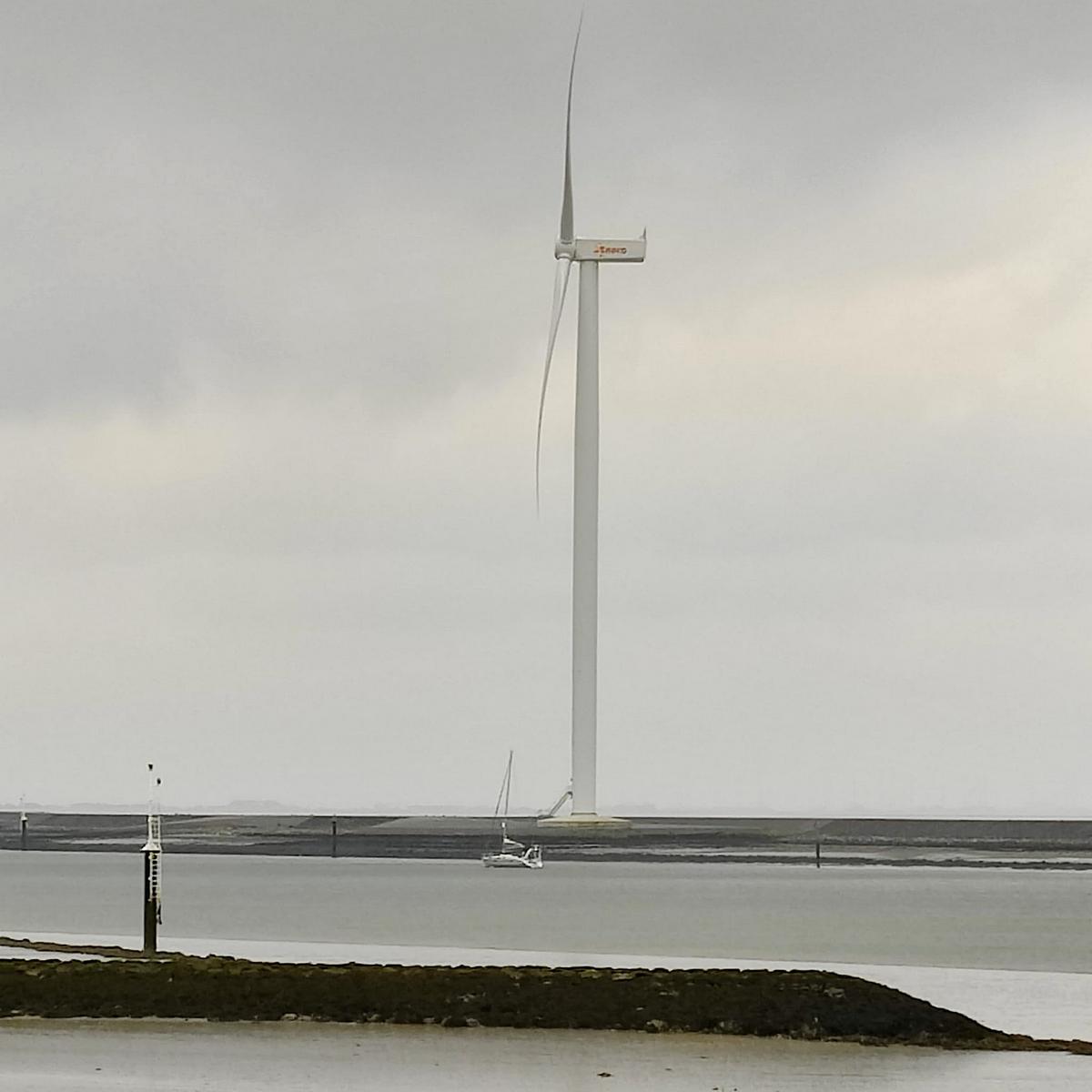
Yuma coming into the Zeekanaal at Delfzijl (photo H. Kroon).
Then, being tired, I radioed the havenmeester to request assistance with mooring up. ‘No problem’, she said, ‘just watch the wind against current as the sluices are open to release water’. Oh dear…
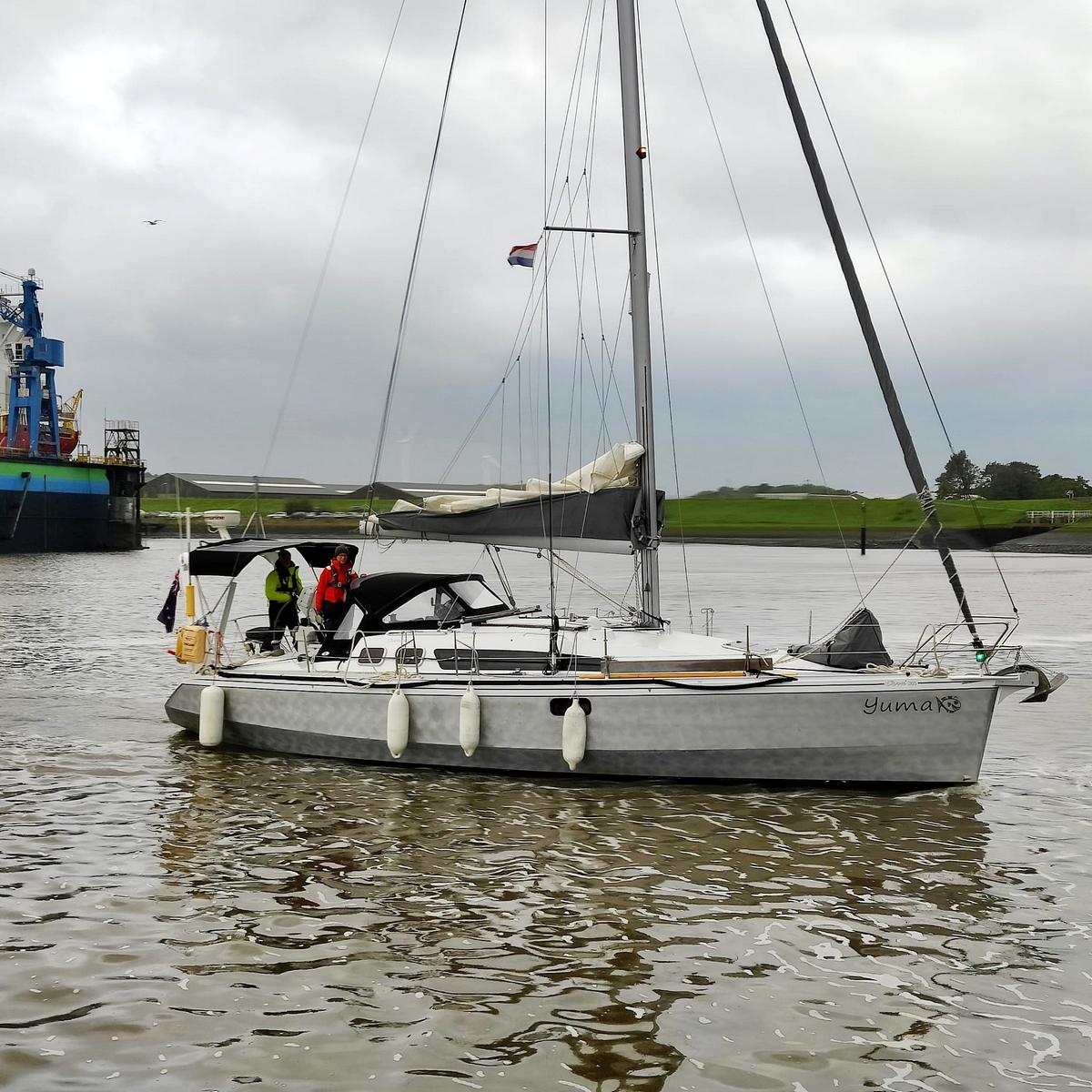
Yuma in Delfzijl harbour (photo H. Kroon).
But under the watchful eye of the havenmeester and my sister, David expertly manoeuvred the boat into the berth at the Neptunus jachthaven. After being away for five months, we had arrived back in the Netherlands!

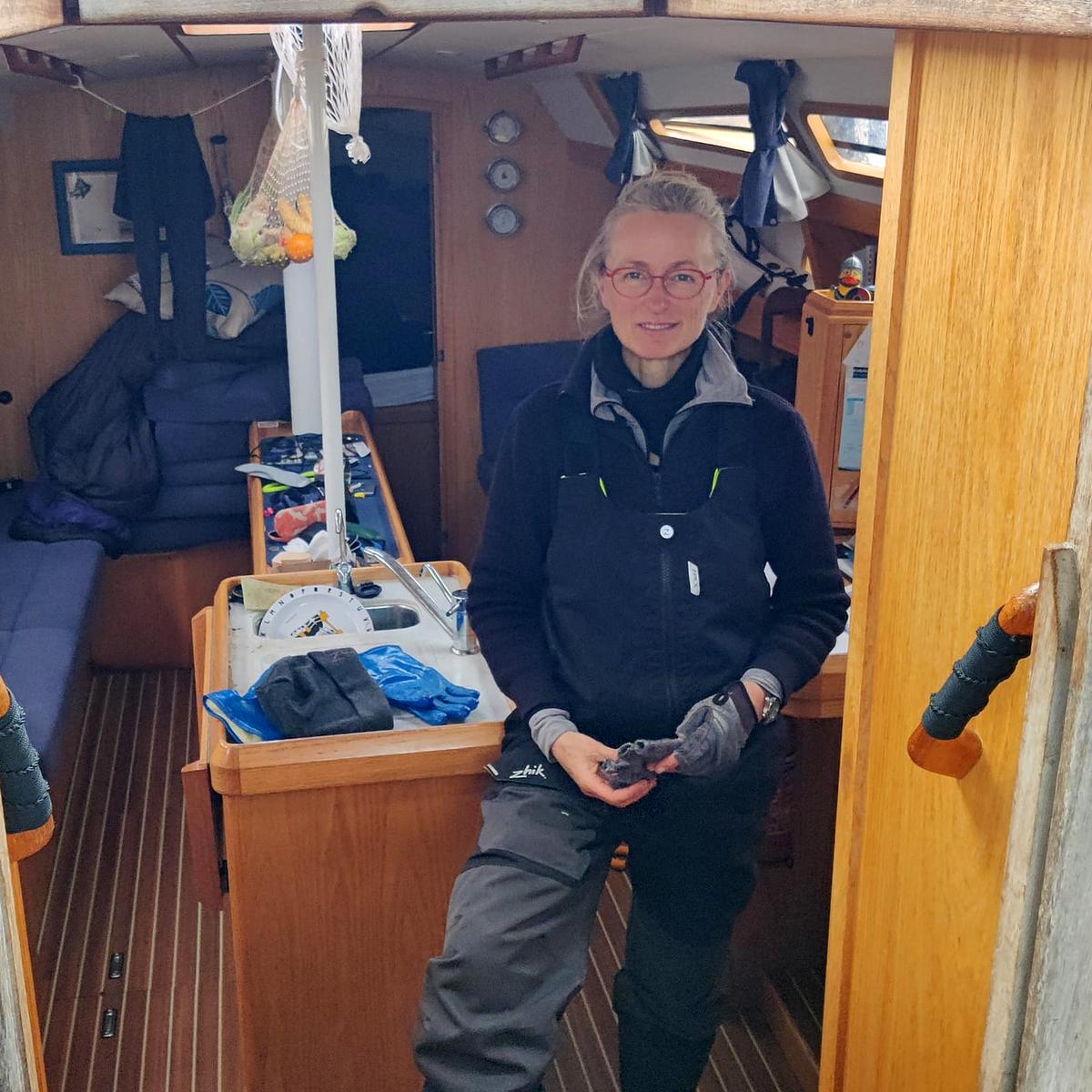
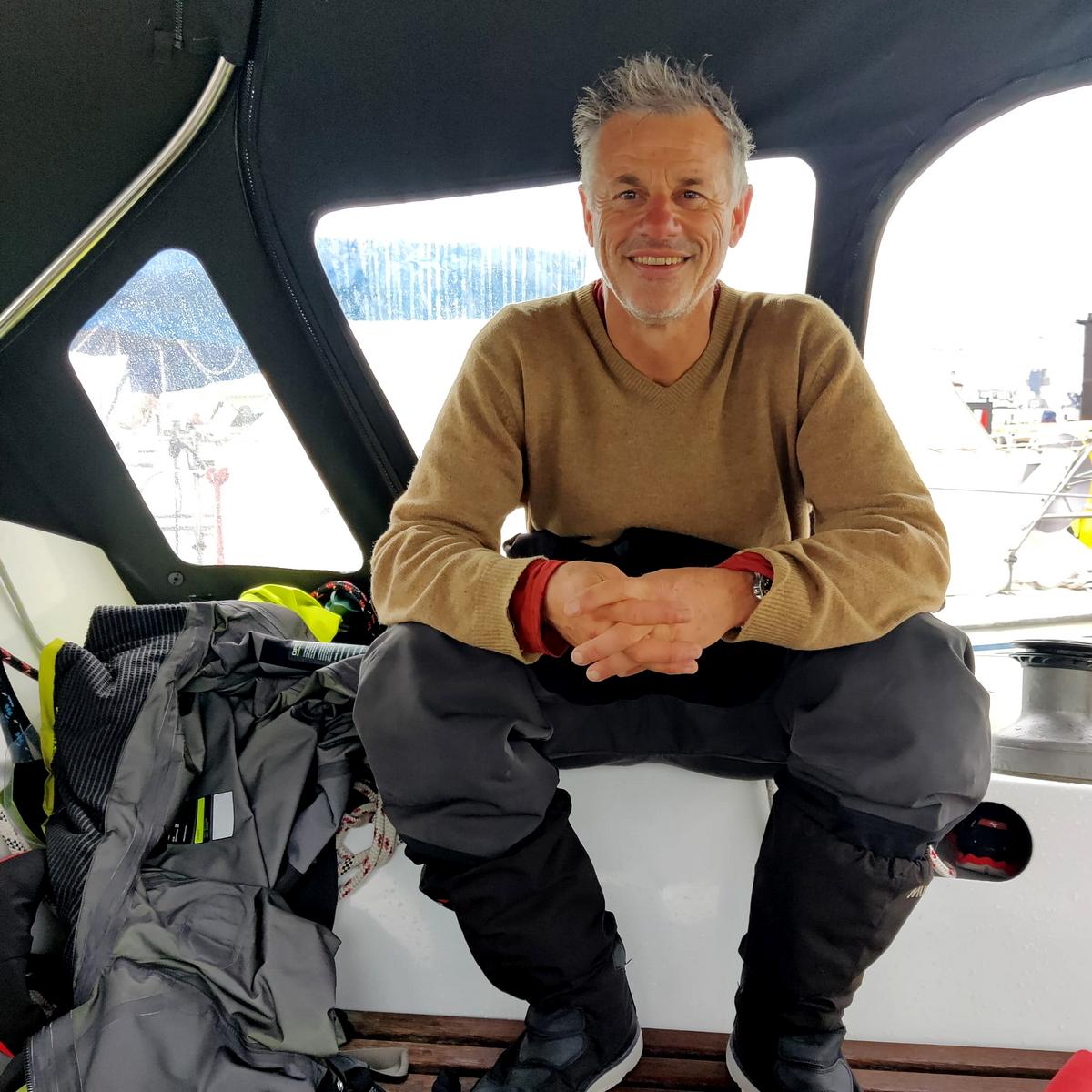

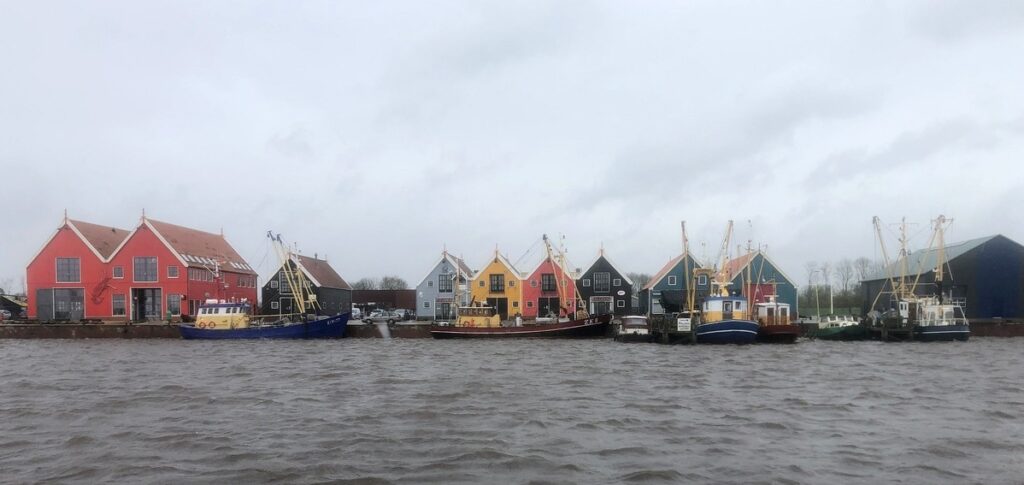
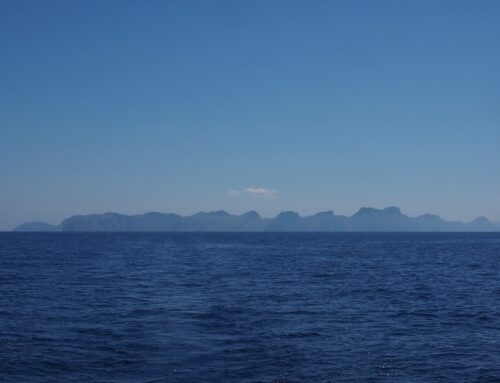
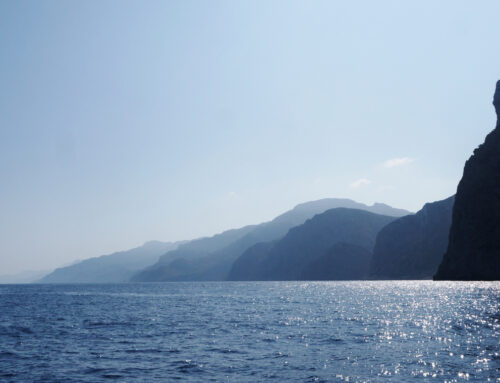
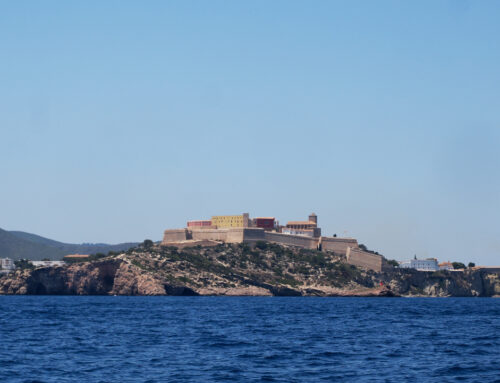
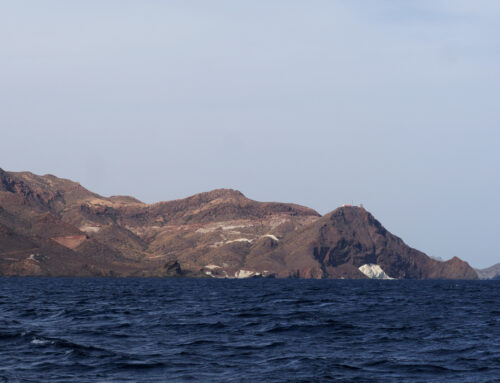
Joehoe weer terug in Nederland. Maar wat een bevalling dat laatste stuk. Op naar een volgend avontuur 🎉